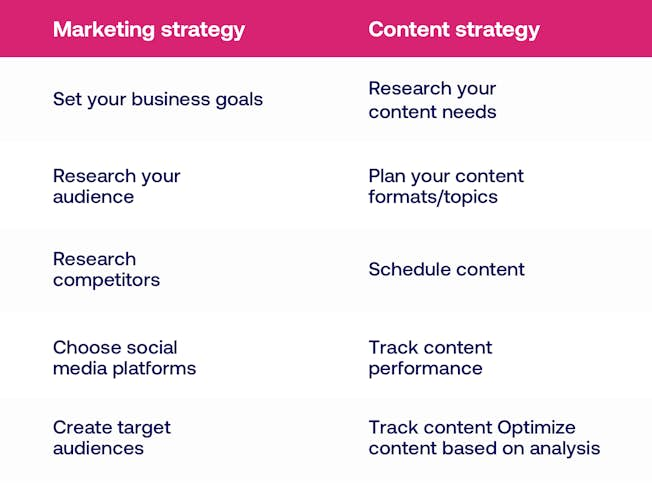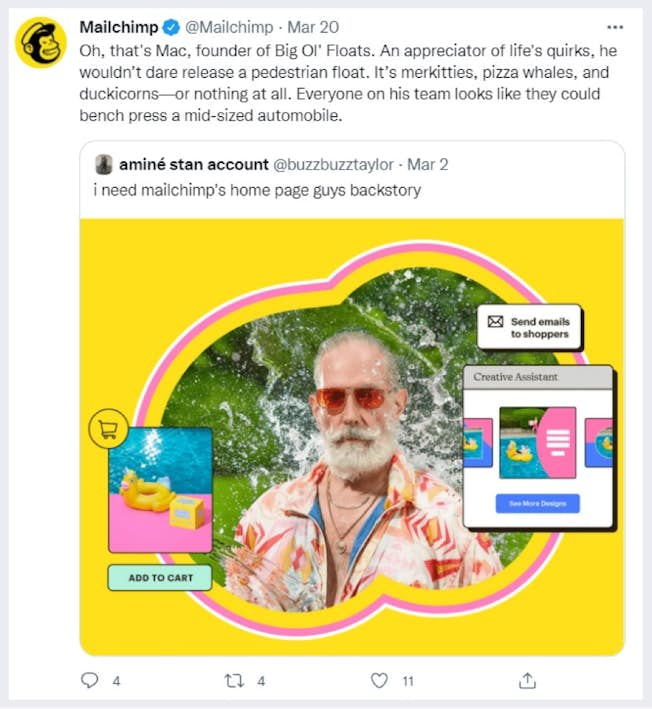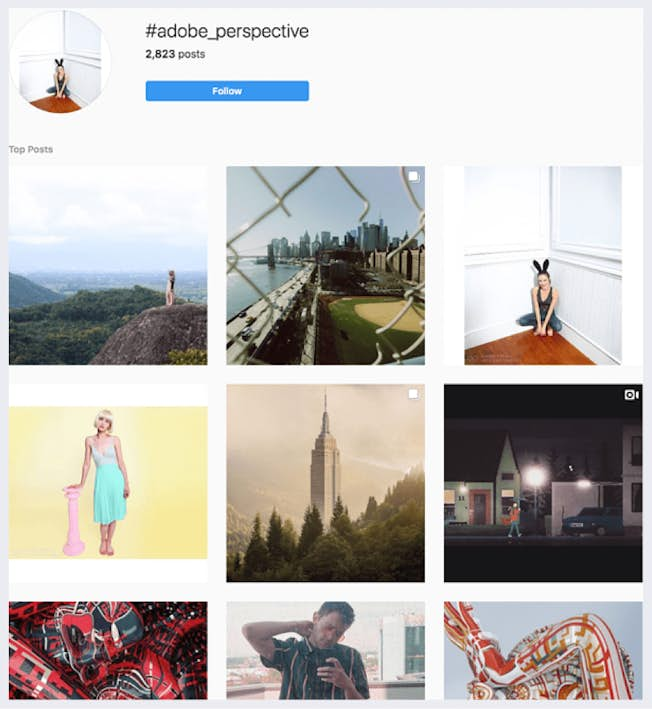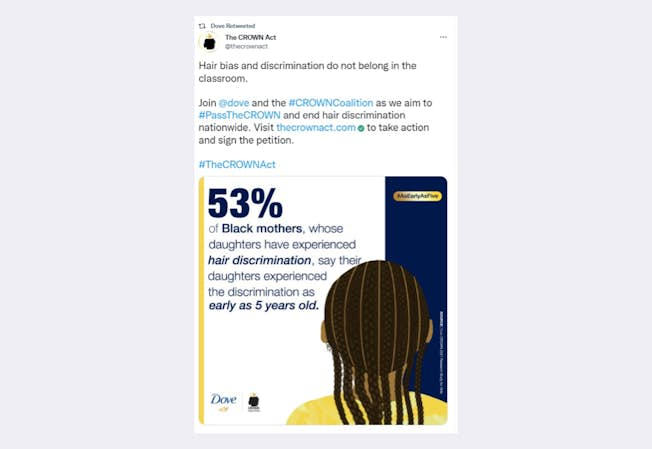Apr 11, 2022
How to Develop a Social Media Strategy That Drives Brand Awareness & ROI
Social media marketing is no longer an option for a brand or business, it’s a necessity. With so many demographics active across social networks on a global scale, it’s where you want to be to engage, influence and convert.
To see why, just look at these stats from Digital 2022: Global Overview Report:
- There are 4.6 billion active social media users—that’s nearly 60 percent of the world’s population
- The average time spent every day on social media is 2.27 hours
- 2022 has seen a rise in TikTok, YouTube, and Instagram users
- People use an average number of 7.5 platforms each month
Just think about the success of Apple’s enduring #ShotOniPhone campaign across social media channels or the #GettyMuseum challenge to get inspiration from Getty’s collection during the coronavirus pandemic.

In this blog, we’ll break down the most important elements of social media marketing.
- What is a social media strategy?
- What are the benefits of having a social media strategy?
- Social media marketing strategy vs. social media content strategy
- What is a social media engagement strategy?
- What are the steps in building a social media strategy?
- What is a good example of a social media strategy?
- Social media strategy for small businesses
What is a social media strategy?
Put simply, a social media strategy is a plan that outlines your social media goals, the tactics used to achieve them and metrics tracked to measure performance.
Your strategy doesn’t need to be complicated. What you want is a simple and specific plan with meaningful measurables. This will help you to identify the channels and tactics that are successful, versus those that fall flat.
Check out this webinar to find out how to give your social media strategy a little love!
Ultimately, your social media strategy should drive brand awareness and engagement across social media channels for your target audience/s.
What are the benefits of having a social media strategy?
You may have run a successful social media campaign or great engagement on your posted content. That one-off success is achievable. However, the difficult part of social media marketing is consistency. Do you understand why that campaign or post succeeded? Can you replicate it easily?
It may be daunting to think about creating a social media strategy, but it will provide your business with many tangible benefits, like
- A direction for all your social media activities
- Improve brand awareness
- Offer social customer service and support
- Enhance targeting across audiences
- Direct and increase website traffic
- Personalize content
- Generate better quality leads
- Create social media influencer opportunities
- Promote your unique content that could go viral (remember the ALS ice bucket challenge?)
- Offer social commerce and shoppable posts
- Data you can analyze and measure
As you can see there are huge benefits to social media, so creating a strategy will serve to achieve your business goals and drive customer engagement.
Social media marketing strategy vs. social media content strategy

While content marketing and social media marketing are closely linked, there’s a difference between them.
A marketing strategy is the place to start if you want to direct and enhance your social media activities. It involves some key elements such as audience research, persona building, choosing the social media platform, and much more.
A content strategy focuses on the content formats and outputs. So it should look at the creation of content, messaging and tone, content scheduling, etc.
We’ve broken down the key areas involved in both:
What is a social media engagement strategy?
Your social media engagement strategy is important as it creates connections with your audience across networks. It helps you to manage your community through social media channels and build your brand.
The two core purposes of an engagement strategy are to:
- Manage your community: this can be done by offering advice through a blog, responding to comments in posts, replying to queries on channels, and reaching out with polls or surveys to find out more about your customer base.
- Grow your following: interaction is important here, so offer content that is valuable such as engaging video content, engage prospects with free content or competition offers or simply demonstrate your brand as active and useful by being responsive on your networks to draw people in.
User-generated content (UGC) can play a key role here as it’s evidence of the people that support your brand talking about it, rather than it coming from your business or marketing team. Here are four great UGC examples you can take inspiration from.
What are the steps in building a successful social media strategy?
Now that you understand the basics of a social media strategy, let’s get to the specific steps you need to take to create one. We’ll also highlight where to integrate your content strategy and engagement strategy into your overall social media activities to ensure all bases are covered.
Here are seven steps to creating a successful social media strategy which includes:
1) Set goals for your business
It’s worth spending time on this stage as understanding and defining your social media goals will determine the rest of your strategy.
Think about what your business wants to achieve from social media and understand that marketing and business goals are different. Is it greater brand awareness in the marketplace, to learn more about your audience, expand your following or generate more leads? You may want to achieve all these goals, but it’s crucial to note each one of them as they will involve different tactics on social media.
When you set your goals, define your Key Performance Indicators (KPIs) to understand which social media metrics are important.
To be successful on social media, set metrics for each channel you use. For example, on Facebook, reach, engagement and impressions are important, whereas on Instagram interactions and discovery are key.
Over and above basic metrics you can dig deeper and track audience growth rate, amplification rate (the rate users share your content) or virality rate. There are many metrics you can use to track success, so narrow them down to what matters to your business.
2) Research your audience
To create personalized messaging and content, you need to understand who your audience is and what they want. The best way to achieve that is to conduct market research through online surveys, interviews with your customers or by setting up a focus group.
Another way to find out more about your customers and community is to do social listening. Many tools can help you do this across social networks including BuzzSumo or Followerwonk.
Both of these methods will help inform your buyer personas which combine your buyer profile and buyer insights to create a picture of your ideal customer. You can have more than one persona to capture the different insights, demographics and pain points.
If you need help creating buyer personas, our handy template will get you started.
3) Research your competitors
Competitor research is a crucial part of your social marketing strategy. It helps you understand what your competitors are doing in the social space such as what platforms they use and campaigns they run.
You can also see what their messaging is, the content produced, and the frequency of posts. By understanding how they engage with customers and the success of that engagement you can either emulate it or take another direction to capture customers’ attention.
4) Choose your social platforms
The question isn’t whether you should be active on social media, it’s how to choose the best channels for your business.
It can be confusing in the beginning as there is a lot to choose from. However, don’t make the mistake of being present on all of them for the sake of it, some will not suit your business or content. So how do you narrow down your choices and optimize content for every social network?
Facebook: As one of the biggest social media platforms and the oldest, Facebook offers a targeted way to engage with prospects and customers. Many content types do well on this platform and Facebook Live offers you a way to connect with customers through video. Here’s a simple guide to setting up a Facebook Business page.
Instagram: The perfect visual platform, Instagram continues to be a hit amongst younger audiences and has seen huge growth over the past few years. It’s a great platform to showcase products and connect with influencers to grow your customer base. Plus with in-app shopping coming to Instagram soon through shoppable posts, customers will be able to purchase on the platform.
LinkedIn: LinkedIn is the place to be for B2B businesses and provides opportunities for B2C too. It provides businesses with a way to connect in the B2B space both organically and through paid advertising. Content that works well on this platform are blogs, whitepapers, eBooks, and industry-related content.
Twitter: Twitter is a real-time platform which means your content should be timely and relevant. It can be a great customer service channel for brands as it allows quick replies and its hashtags help discover new and trending content. There’s a knack to using hashtags successfully so take time to figure out how to use them across social networks. Find out how to use Twitter effectively for your business with our in-depth blog.
TikTok: As one of the fastest-growing social media channels, TikTok is a great place for video content. Known for its short-form and quirky videos, it’s developing rapidly as a platform and can be used effectively for marketing. For user-generated content, you can’t beat TikTok and it’s a great place for influencer collaborations. Check out this influencer tool if you’re looking to keep track of potential partnerships.
YouTube: Someone somewhere right now is watching a YouTube video. That’s how popular it is! It’s a marketer’s playground as it provides a way to connect with customers in a way that provides information but can also offer entertainment. If you’re a brand that creates a lot of videos, particularly how-to or tutorials, this could be the platform for you. Check out our blog on 10 ways to grow your YouTube channel to start with a bang.
Pinterest: Pinterest is all about social discovery. It’s a place people come to get inspired by images and videos. The millions of pins it showcases cover everything from home decor to recipes and it’s great for content curation - like a social mood board. You can find out how to use Pinterest for your business in our blog.
5) Plan your content
Now that you’ve done your research and decided on the right social media platforms, it’s time to think about your content and approach. To help you get started, check out our social media style guide.
Let’s go into planning your content in simple steps:
- Create a tone for your pages. Tone is how you want the world to see and speak to your brand. Are you formal or informal? Do you use humor or is your business more serious? Each platform has its own personality too, so do you want to speak differently on each and showcase your brand’s personality?
- Create content themes or content buckets. Look at what your USP is and see what content themes or buckets you can create. For example, if you’re a travel resort or hotel, you could create a content bucket around wellness showcasing your spa and healthy recipes. Another content bucket could be about your location, what makes that place unique and interesting, is it the wildlife, scenery etc.? If you need help with content creation, there are some great tools out there.
- Create a content calendar. It’s key to post regularly on social networks and a calendar can put some order to your posting especially if you’re posting on multiple channels. There are optimum days and times for networks too so take that into account and find out when to post on TikTok and the best times to post on Instagram.
- Schedule your content. It can be difficult to keep up with the pace of social media and if you post regularly, keeping to a schedule is important for consistency.
What makes a good social media post?
It’s easy to create posts, but taking the time to create good content will be worth the effort in terms of reach and engagement. So, how do you ensure you create good posts?
- Monitor content performance - it’s important to analyze your content to see what does and doesn’t work
- Optimize your content - Tweak your content to optimize its performance
- Think about new angles for your content - Would humor work or what about video testimonials from previous customers? Don’t stick to the same message and format all the time, try new things.
- A/B test content - Try different versions of content on platforms to see what works better. Is there a keyword that resonates better, or do different colors get better engagement?
- Track your KPIs - Refer back to your KPIs to make sure you’re on track with your content
There’s no magic solution to creating good content. It’s about putting content out there, analyzing it, optimizing it, and trying something new.
6) Manage and engage your community
The great thing about social media is that it builds connections and these connections can become communities. Communities are wonderful things as they build engagement and drive brand awareness.
An active community is an amazing thing as it can create brand advocates and draw in new customers. But a community needs nurturing, so you need to take time to build it and then grow it.
A key element to managing and engaging a social media community is to be responsive. If a customer has a query or comment, get back quickly and be helpful. As social media becomes more popular as a way for customers to reach out, inevitably there will be complaints. Make sure to respond positively and find out how you can make their experience more positive to avoid a social media crisis.
Engage your community by asking questions through polls or surveys. It makes them feel a part of the community, but also may help you find out more about your customer base.
7) Grow your following
There’s no point in having a social media channel if you don’t get new followers. Growing your audience is an important part of any social media strategy and you need to use tactics to achieve it.
There are two ways to grow your audience: organically or through paid advertising. For the first, content is crucial as it will help to attract users and drive engagement. For example, you could run a competition or offer behind-the-scenes footage of what it’s like to work for your brand.
Remember you can always promote one platform on another. For example, your Facebook users might be interested in your Instagram feed. Promote a post that sends people across channels to see the impact.
Using paid advertising you can set a daily budget and target a group of users. Use a paid media campaign tracker so you can keep on top of all the campaigns. You can also work with influencers to promote one of your products. Micro-influencers can be very useful especially at a local level if you’re a restaurant or bar trying to get people in the door. You can also use PR by putting out a press release or getting an article in a relevant publication to drive people to your social channels.
There’s a great example of how to get more views and followers on Snapchat that can be applied across channels.
What is a good example of a social media strategy?
If you’re in the marketing sector, there’s going to be a brand or business you admire. It could be a global brand like Airbnb or Amazon or maybe it’s a business like TOM’s that focuses on corporate social responsibility.
Whichever brand you admire, finding out more about how they do what they do is a great place to get inspiration. It’s the same for social media. Learning from examples can give you great ideas that you can replicate in your own business. Let’s look at some B2B and B2C examples.
B2B social media strategy examples
B2B marketing can be seen as less exciting than its counterpart, but there are some great examples out there to get some ideas from.
Marketing automation may not be sexy, but Mailchimp does well at giving it personality. As an all-in-one email marketing service, they use bold colors and interesting illustrations across their website and social media channels to engage the eye and their tone and language are playful.
They also use every opportunity to engage with their social media communities with a humorous tone that goes down well with users and customers.

Content creation software giant Adobe is another B2B company that sees social media success. Strong and impactful imagery is its strength and the brand uses that to its advantage. It also highlights the talents of encouraging them to share user-generated content using the long-running Instagram campaign #adobe_perspective. It then reshares the best on its brand account and tags the creator to promote its suite of products.

B2C social media strategy examples
There are some great examples of B2C social media campaigns. One brand that’s nailed ‘fun’ is Pringles. Using TikTok, Pringles launched a #PlayWithPringles campaign that encouraged creators to use their can in videos to do something creative. The campaign went viral and amassed nearly five billion views.
Dove is a brand known for promoting natural beauty in its campaigns. Based on research that showed that race-based hair discrimination starts as early as five years of age, Dove launched a #PassTheCrown campaign. This campaign highlighted the cause across their social media channels to urge people to sign a petition to pass the Crown Act.

There are also some great examples of how brands can take on social issues using social media.
Nonprofit social media strategy examples
Nonprofit organizations rely on social media to raise brand awareness but also to boost donations. As people become more interested in social issues, they look for causes they want to support and get involved in. But with so many organizations out there, how can you stand out from the crowd? Here are some great examples to take inspiration from.
The World Wildlife Foundation is a well-established brand in this sector and there’s a good reason for that. Their campaigns are impactful and rely on visuals to get attention. Their #LastSelfie campaign was developed to highlight the risk to endangered animals.

The campaign had such an impact that it hit its target in just 3 days and was seen by 120 million Twitter users in just one week.
Another example of a nonprofit focusing on animals was Bronx Zoo. Their ‘Name a Roach’ was a campaign designed for Valentine’s Day where people could name a cockroach after one of their exes. The campaign was adopted by other zoos and went viral through social media posts on TikTok and Twitter.

Social media strategy for small businesses
All businesses, particularly small businesses, can benefit from a social media strategy. It will help increase reach and engage a broad range of customers you would never have had access to previously.
Plus, it can be affordable if you plan correctly and use external help. Using freelancers is a great way to keep costs down as there’s a lot of great talent out there. Sites like Upwork or Fiverr are good ways to source freelancers or even do a call-out on social media for locally-based talent that could help.
Check out our blog to find out 10 ways small businesses can improve their social media presence. There’s also a social media calendar template you can download to help plan and keep track of activities.
How do you create your own social media strategy?
The more you know about how social media works, the better your strategy will be. So it’s important to understand the fundamentals of social media marketing along with the intricacies of each platform so you can target the right audience.
If you follow the steps we’ve outlined, you should be able to create a social media strategy that drives engagement and leads.
Create an Awesome Social Media Strategy for Your Business
The best social media strategies are the ones informed by knowledge. DMI’s Social Media Marketing course will teach you the basics of social media marketing and help you understand how to use analytics, apply social customer service and use the most important social platforms. Get started today to create a strategy your business deserves.
Related
Upgrade to Power Membership to continue
your access to thousands of articles, toolkits, podcasts, lessons and much much more.
Become a Power Member- Login
- View Courses
- - - -
- Courses
- Resources
- - - -
- My Account
- Change Password
- Logout





